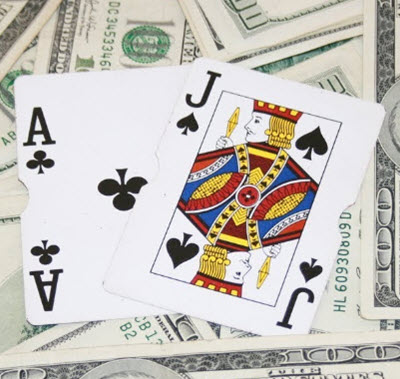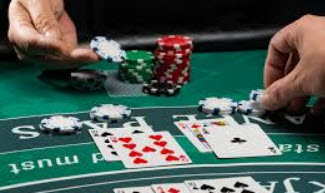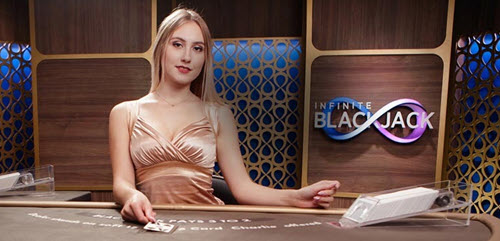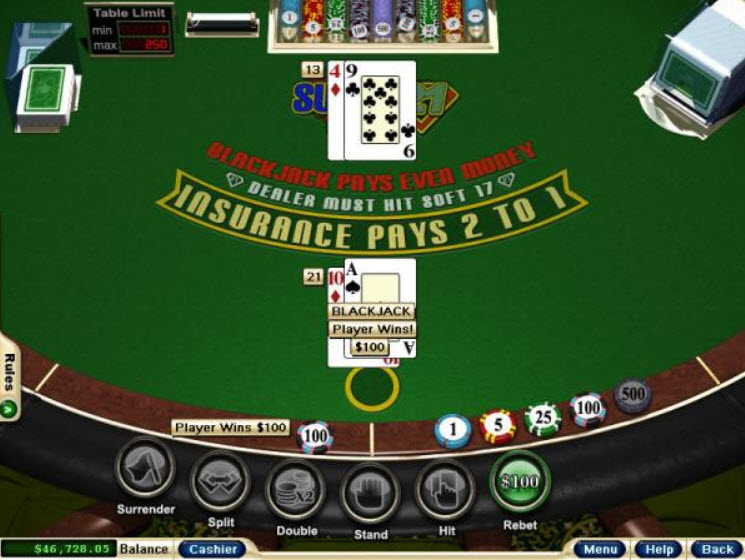Blackjack Games – Complete Guide on How to Play and Win at Blackjack
Blackjack Games are some of the best kind for games that players enjoy playing in online casinos. Even with its popularity, some people don't really know how Blackjack works. If you're one of them, then you should check out this guide.
Except for poker, blackjack is the most well-liked card game. the same degree of fame as Twenty-One. The game has straightforward rules, exciting gameplay, and room for advanced strategy. In actuality, the chances of winning are occasionally in the favor of the skilled gamer who statistically plays a faultless game and has mastery of card counting.
Blackjack is one of the most alluring casino games for players since, even for the casual player who plays a respectable game, the casino odds are lower. Blackjack's popularity dates back to World War I, but its origins can be traced to the 1760s in France, where it is known as Vingt-et-Un (French for 21). The only card game still played today across every American casino is blackjack. It is played using slightly different rules than other common household games. The house serves as the dealer (a “permanent bank”) in the casino version. The dealer in a casino game is still standing while the gamers are seated. The dealer is responsible for overseeing every part of the game, including dealing and shuffling the cards as well as taking care of any wagers. Every player has the chance to be the dealer (a “changing bank”) during the home game.
The Pack
Although the regular 52-card pack is utilized, most casinos combine several decks of cards. The most well-liked version is the six-deck game (312 cards). The dealer also uses a blank plastic card to mark the bottom of the pack whenever it's time to rearrange the cards. This card is never dealt with but serves as a visual cue. Dealt from a shoe while using four or more decks (a box that permits the dealer to remove cards face down, without holding more than one pack).
What the game's about
By achieving a count near 21 as feasible without going over 21, each participant tries to outdo the dealer.
Values/Scoring for Cards
Whether an ace is valued at one or eleven depends on each player. Every other card has its pip value, while face cards are valued at 10.
Betting
Each player sets a wager in chips in the allocated space ahead of them before the deal starts. The betting has maximum and minimum restrictions, with the typical range being 2 to 500 USD.
The Cut and Shuffle
Parts of the pack are thoroughly blended and merged by the dealer before the entire pack is done. The plastic insert card is put such that the final 60 to 75 cards won't be utilized, and the dealer chooses one gamer to cut. (Not handing all the cards to the bottom makes it harder for expert card counters to work efficiently.)
The Deal
After everyone has placed their stakes, the dealer deals one card face up to every gamer in a clockwise rotation before dealing themself one card. The next set of cards is dealt to every gamer face up, but the dealer keeps the second card, which is dealt face down. As a result, every player gets two cards to face up, except the dealer, who gets a card face up and one card face down. (The participants' cards are dealt face down and they can keep them in some games that are played with just one deck. The cards of the players are dealt face up in almost all blackjack games played today, with the restriction that no gamer may alter any cards.
Naturals
A natural or “blackjack” occurs when a person's first two cards are a “ten-card” and an ace(a 10 or a picture card), giving a count of 21 in two cards. The dealer will instantly pay a gamer one and a half times their wager if they have a natural and the dealer does not. All wagers from players without naturals are instantly collected by the dealer if they have a natural (but no extra amount). The player's stake is a stand-off (a tie), and the chips are returned if both the dealer and another gamer hold naturals. The dealer checks their face-down card to determine whether the two cards combine to form a natural if their face-up card is an ace or a ten. They wait until the dealer's time to play before looking at the face-down card if the face-up card is neither an ace nor a ten-card.
The Play
The first player to act must choose whether to “stand” (not request another card) or “hit” (request another card and try to get closer to a count of 21, or hit 21). A player can therefore choose to stand on the initial two cards they were dealt or request extra cards from the dealer one by one time till they decide to stay on the sum (if it is 21 or less) or go “bust” (if it is over 21). The player loses in the latter scenario, and the dealer receives the staked amount. The next gamer to their left is subsequently served by the dealer, who now turns to face them.
Because the gamer can consider the ace as a 1 or an 11, and choose whether to draw cards or not, the pairing of an ace and a card that isn't a ten-card is referred to as a “soft hand.” For instance, the total for a “soft 17” (an ace and a six) is either 7 or 17.
Signaling Intentions
When a gamer's turn comes around, they can either yell “Hit” or indicate for a card by making a scratching motion with one or more fingers toward themself, or they can raise their hand as if to say, “Come here!” The player may indicate their desire to stand by waving their hand sideways, palm down, and slightly over the table, or by saying “Stand” or “No more.”
Divvying Up Pairs
When it's their turn, players can decide to regard their first two cards as two unique hands if they are the same value, such as two jacks or two sixes. The initial wager is then placed on one of the cards, and a matching wager must be made on the other card. Before playing the hand to their right, the gamer must play the hand to their left either standing or striking once or more. The dealer concludes with each hand based on its own merits after treating the two hands independently. When a player has two aces, they are dealt one card for each ace and are not allowed to draw again. Additionally, if any of these aces receive a ten-card, the payout is equivalent to the wager.
Doubling Down
If the player's initial two cards total 9, 10, or 11, they can also choose to double their wager. When it is the gamer's turn to wager, they do so with an equal amount to the original stake, and the dealer deals them just one card. This card is dealt face down, and it isn't revealed until the bets have been finalized at the end of the hand. With two fives, the gamer has three options: split a pair, play the hand normally or double down. Keep in mind that the dealer cannot split the pot or double down.
Insurance
Any gamer may place a side wager of up to half their initial wager that the dealer's face-down card is a ten-card, resulting in a blackjack for the house when the dealer's face-up card is an ace. The dealer examines the hole card after each of these side bets has been put. If a ten-card is revealed, the players who placed an insurance bet win and receive a payout of two to one (or twice the sum of their half-bet). Naturally, the hand is over when the dealer gets a blackjack, and the participants' major wagers are collected, unless another player also gets a blackjack in which event it is a stand-off. Unless the player is certain that an abnormally significant number of ten cards are still undealt, insurance is never a wise idea.
Settlement
Once paid and received, a wager is never refunded. The fact that the gamer goes first is therefore a major benefit to the dealer. Even though the dealer also defaults, the player will still lose their wager if they go bankrupt. Each gamer who has stood gets paid the amount of their wager if the dealer goes above 21. The dealer pays the stake of any player with a higher total (up to 21) and takes the bet of any gamer with a lower total if the dealer stands at 21 or less. No chips are given out or gathered when there is a stand-off (a gamer and the dealer both have the same total).
Reshuffling
The dealer collects each gamer's cards and lays them face up to the side against a transparent plastic L-shaped shield once the bets of each gamer have been settled. When the dealer reaches the plastic insert card, which signals that it's time to rearrange, they stop dealing with the shoe and begin again. Following the conclusion of that round of play, the dealer rearranges all of the cards, gets them ready for the cut, puts them in the shoe, and the play resumes.

Best Blackjack Odds
Best Blackjack Odds: Mastering the Perfect Strategy for Winning! Welcome to the exhilarating realm...

Online Blackjack Real Money
10 Best Online Casinos for Real Money Blackjack Play Real money blackjack online to get the best...

Blackjack
Blackjack Games – Complete Guide on How to Play and Win at Blackjack Blackjack Games are some...

Best Blackjack Casino in Vegas
Best Las Vegas Blackjack Casinos Looking for the best blackjack action in Vegas? Check out our...

Infinite Blackjack
Infinite Blackjack: Side Bets, Splits, Game Rules. Do you want to play a unique blackjack game...

SUPER 21 PLAYER-DEALER
THE SUPER 21 PLAYER DEALER In playing blackjack games, what most of the players do is to decide...

